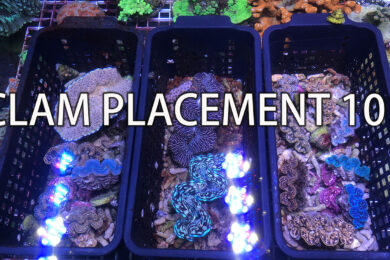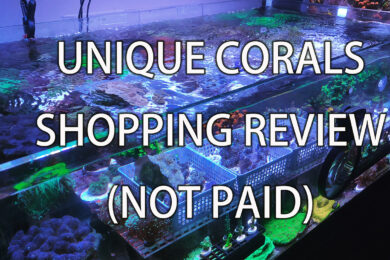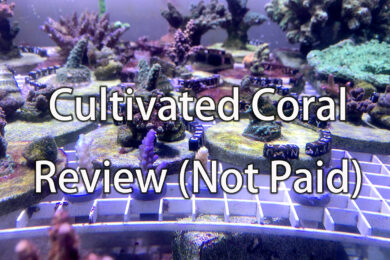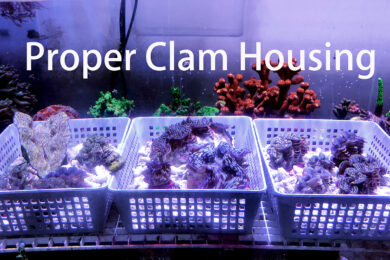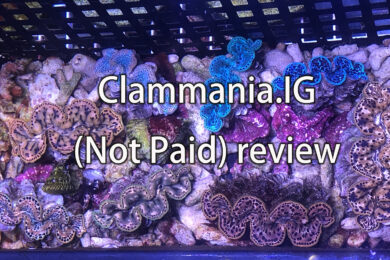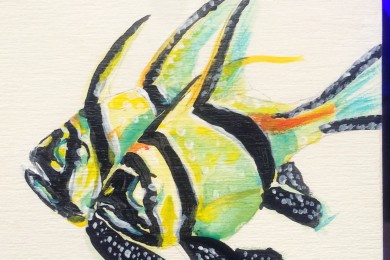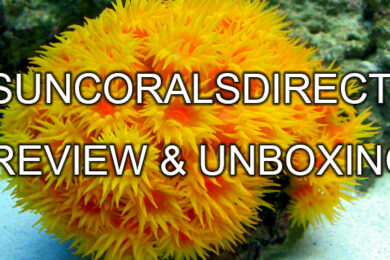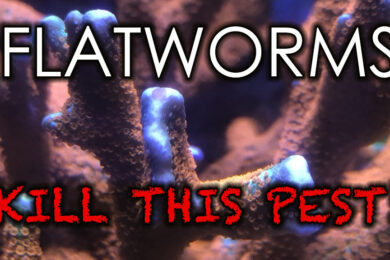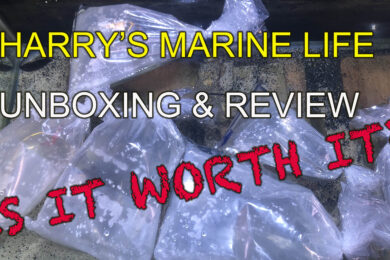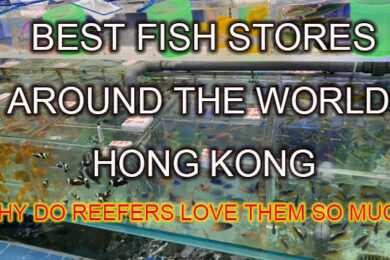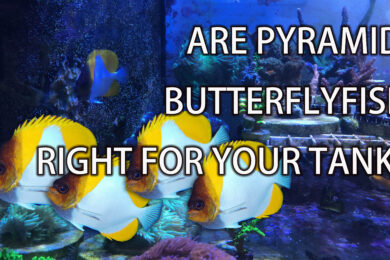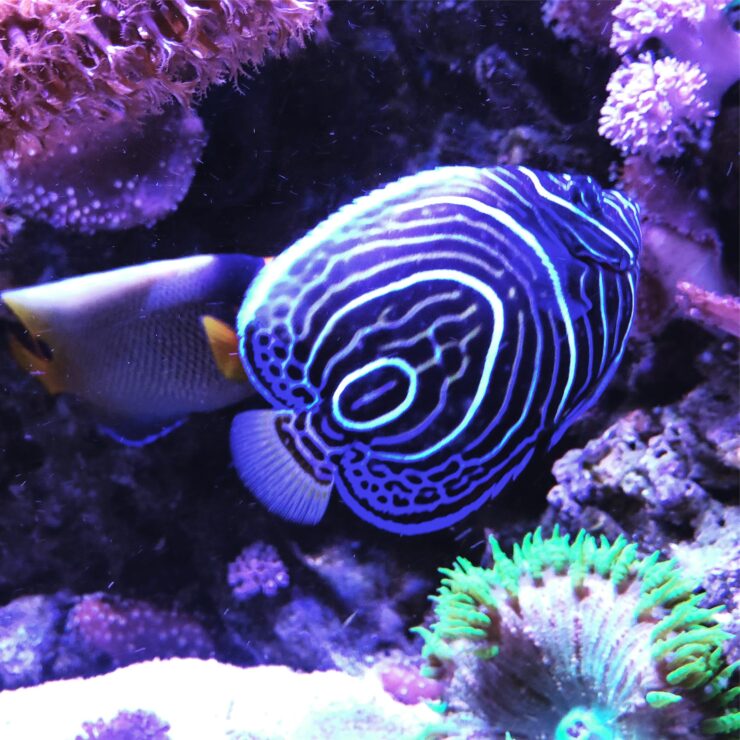
The Emperor Angelfish without a doubt is one of the most majestic fishes in the aquarium trade. Its beautify definitely rivals its asking price, and for the most part, a larger than life personality.
Some basic stats:
Size: Up to 15″ in the wild. Most of the time can’t reach that size in captivity due to environmental constrain.
Origin: Most of Indo-Pacific and tropical Indian ocean. Some can be found as far north as the Japanese reef, and as south as the GBR.
Diet: Anything, literally.
Reef Safe? Well, that all depends. My personal experience:
SPS+LPS: NO
Soft Corals: Caution
Crustaceans: No unless it is an established cleaner shrimp
Snails: Caution
Clams: NO
Fish compatibility: Honestly, anything that isn’t another Pomacanthus angelfish seems to get along just fine, assuming the tank is large enough.
Tank Size: I know there is always debate on this one. I’d recommend 120Gallon + for a juvenile, 180Gallon+ for young adult, and 250Gallon + for full grown adult. Some may argue that they get away with smaller tank. I’d argue that you can live in a tent with five other people, but I think most people would be happier to live in at least a three bedroom house for five right?
The Emperor angelfish, like most of the other Pomacanthus fish in the genus, look like two distinctively different species between its juvenile state and the adult state. I have had the pleasure to enjoy this transition over the course of three years. I first obtained this baby from Liveaquaria in the fall of 2018.

At that time I have already had an adult blue face angelfish living in this tank. I have always loved both the blue face and the emperor angels. But I have strategically planned to have the adult blue face in first, then adding the juvenile emperor. The juvenile emperor was too small to post a threat to the adult blue face, thus the two lived peacefully together. Now I cannot guarantee this is going to work for every fish, but I think I semi-lucked out with this strategy that the emperor angel stayed true to its reputation, that not even a year into this tank, even at the transitional state it began to show it’s dominance of the tank despite being much smaller than most others. But since it is still small, the tank stayed peaceful.
The emperor entered it’s “golden” transition time when you can still see the rings, but also observe the gold stripes coming in.
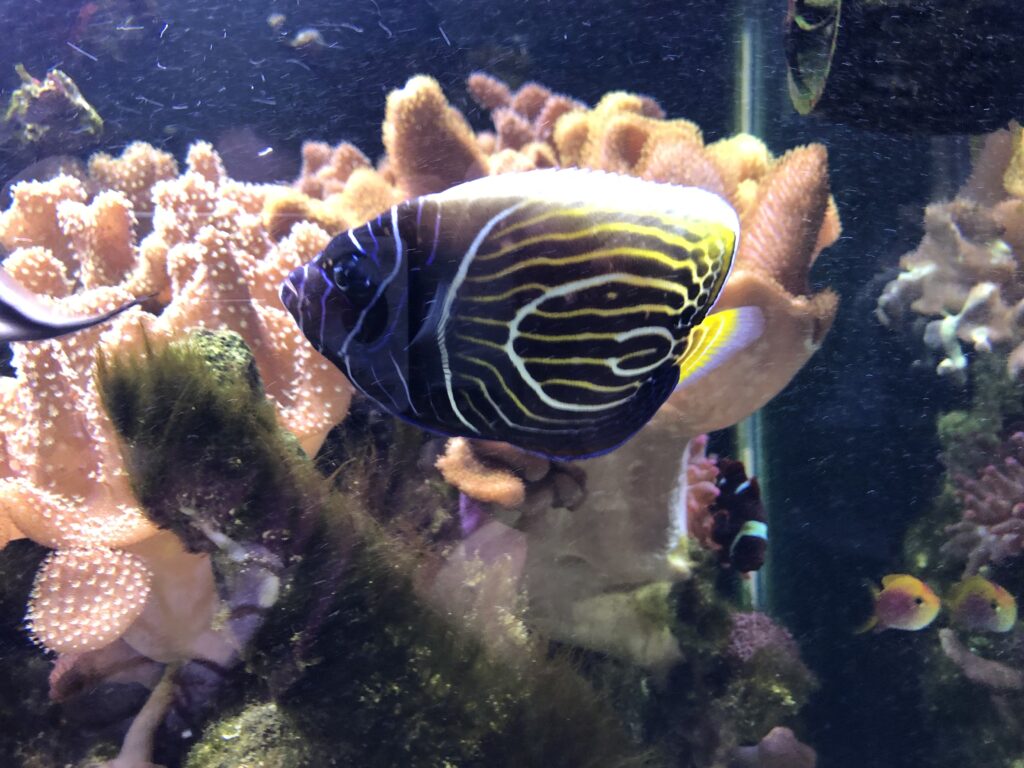
The Emperor began to change color once it hit 4″ in length. And the color morph is almost complete after three years as the fish hits its 6″ mark. To be honest, some days the angel looks down right hideous during the transition time as parts of its skin peels away revealing blotchy colors underneath.
It is now the fall of 2020, and I think the fish is about 90% complete in its morph:
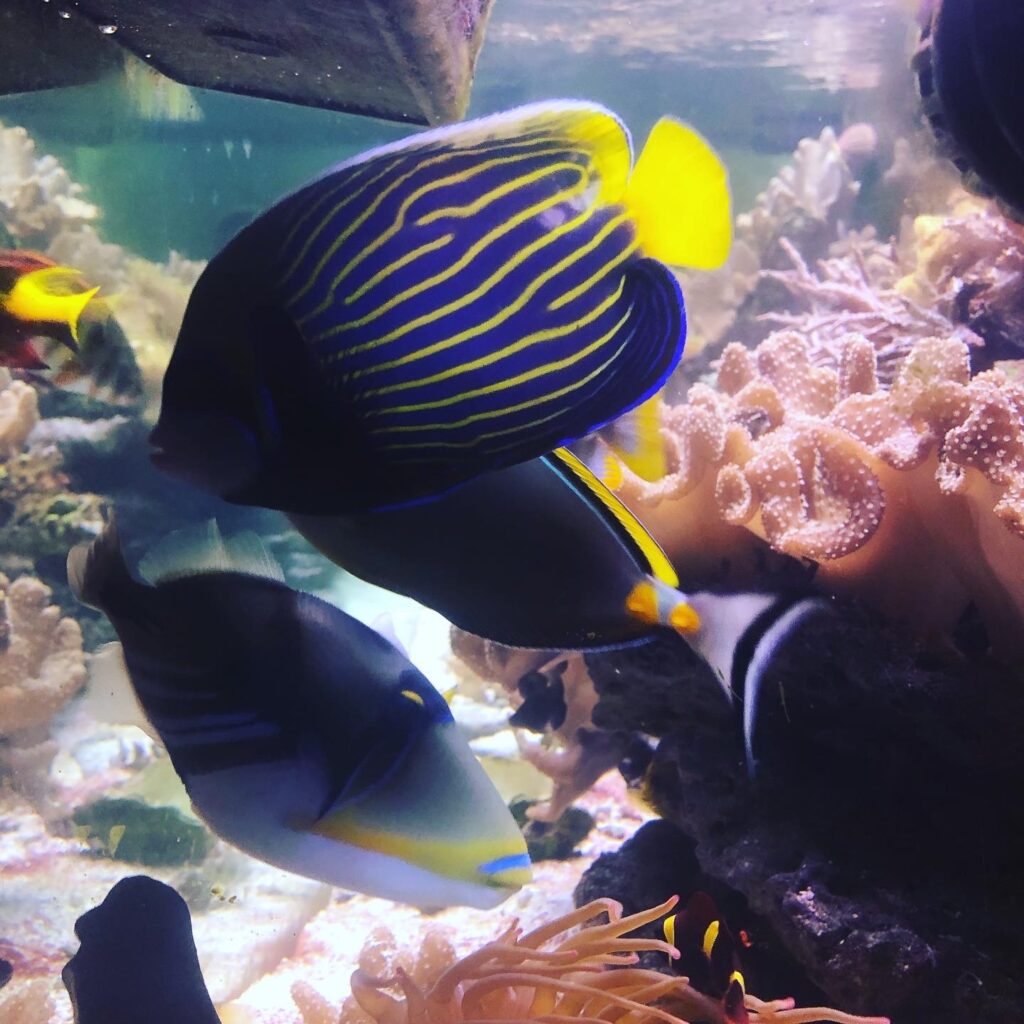
Here is a good size comparison, remember how little it was compared to he Purple Tang? The fish is also a solid 1.5″ across when looking from the top. It is thick!
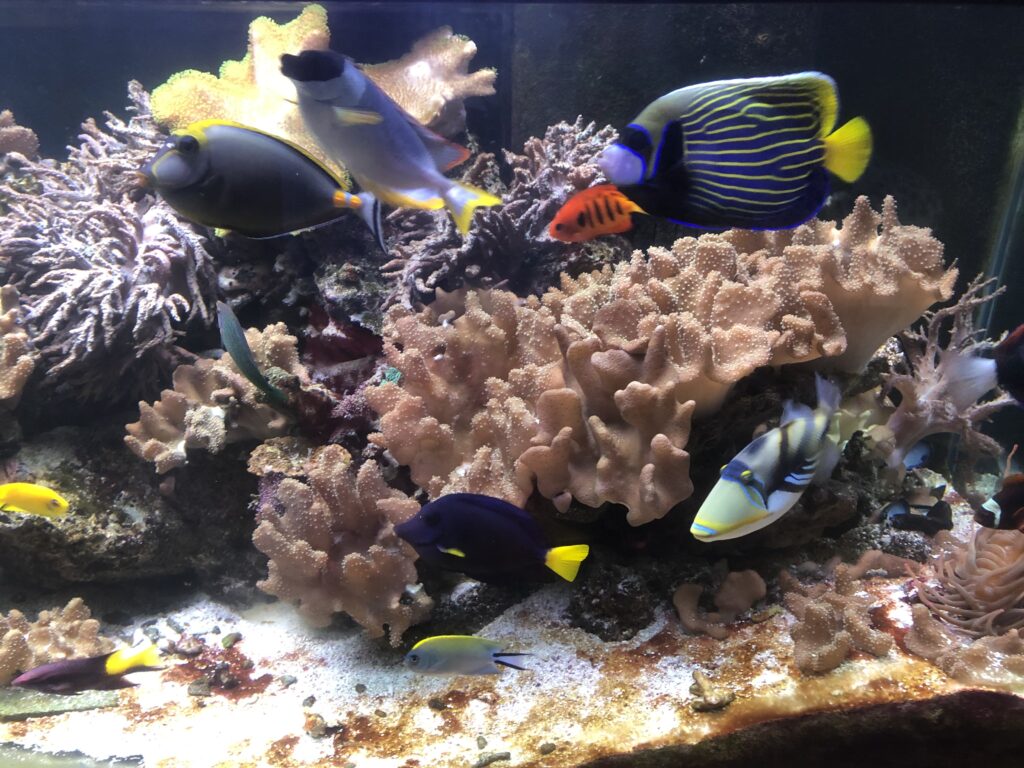
Is it the right fish for your tank?
I will highly recommend the emperor to any seasoned hobbyist. Even though this fish isn’t picky on diet, and is relatively hardy, because of the size it can grow to, and the unpredictable temperament, I don’t recommend it for beginner hobbyists.
Tank size and tank mate selection is definitely the most important science in keeping robust, larger fish. I believe a tank that’s adequate in size will fill these conditions:
- Must allow fish to comfortably turn around without hitting any object or the border of the tank.
- Must allow fish enough room to accelerate, then decelerate when swimming from end to end without hitting objects or borders.
- Must allow enough water volume to provide adequate oxygen level.
- Must be deep enough to allow the fish a sense of security, that they can “dock” from threats on the surface.
Lighting- The emperor angel can appear from a wide range of depth, so they are used to the fluctuation of brighter to dimmer conditions. I wouldn’t worry about lighting for them. But with all reef dwellers, make sure you have a “ledge” with shaded area to provide them shelters.
Flow- Being a robust fish, you can provide varied water flow for the emperor angel. they are just as happy in strong reef crust current as they are in calm lagoons.
Tank Cover- Though ALL fish has the capability to jump, angels aren’t as notoriously known for it as wrasses, triggers, and tangs. Adult pomachanthus angels actually have slightly disproportionally small fins compare to body size so they don’t have that extra gear to leap like wrasses do, but I’ still put caution and in general recommend some form of coverage.
Tank mates: We’ve already covered corals and inverts in the “reef safe” chat above. When it comes to fish, emperors make perfect compliments to any and all tangs, wrasses, triggers and puffers. They can tolerate more aggressive fish since they can be bullies of their own. But I would strongly caution against other large angels, unless your tank is large enough (won’t go into the argument in definition of “large”). The fish they will be mean to, and possibly stressed out include anthias, cardinals, dragonets, seahorses (duh).
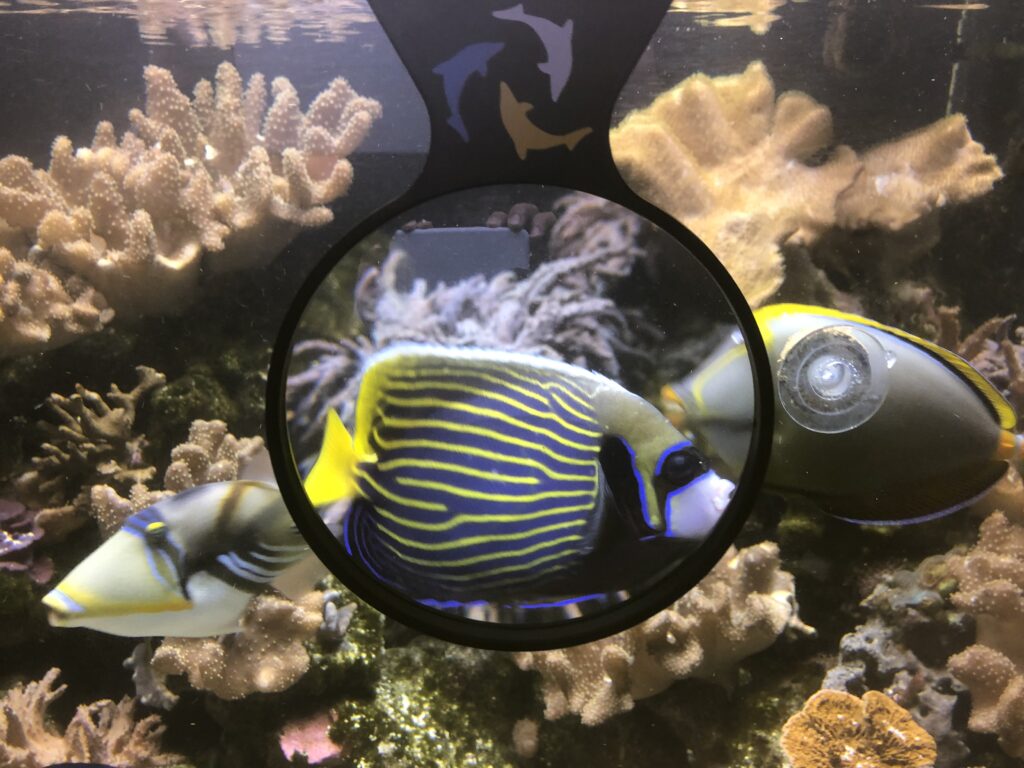
Diet: Last but not least, what do they eat? like I said before, literally anything you throw in the tank. I make my own food blend of krill, miss, prawn, squid, scallop, nori, salmon, and a blend of planktons. he gobbles it down with no hesitation. He’s never refused any dry food let it be pellets or flakes. He’s learned to eat anything on a veggie clip including just lettuce. So honestly eating is the last thing anyone need to worry about these guys.
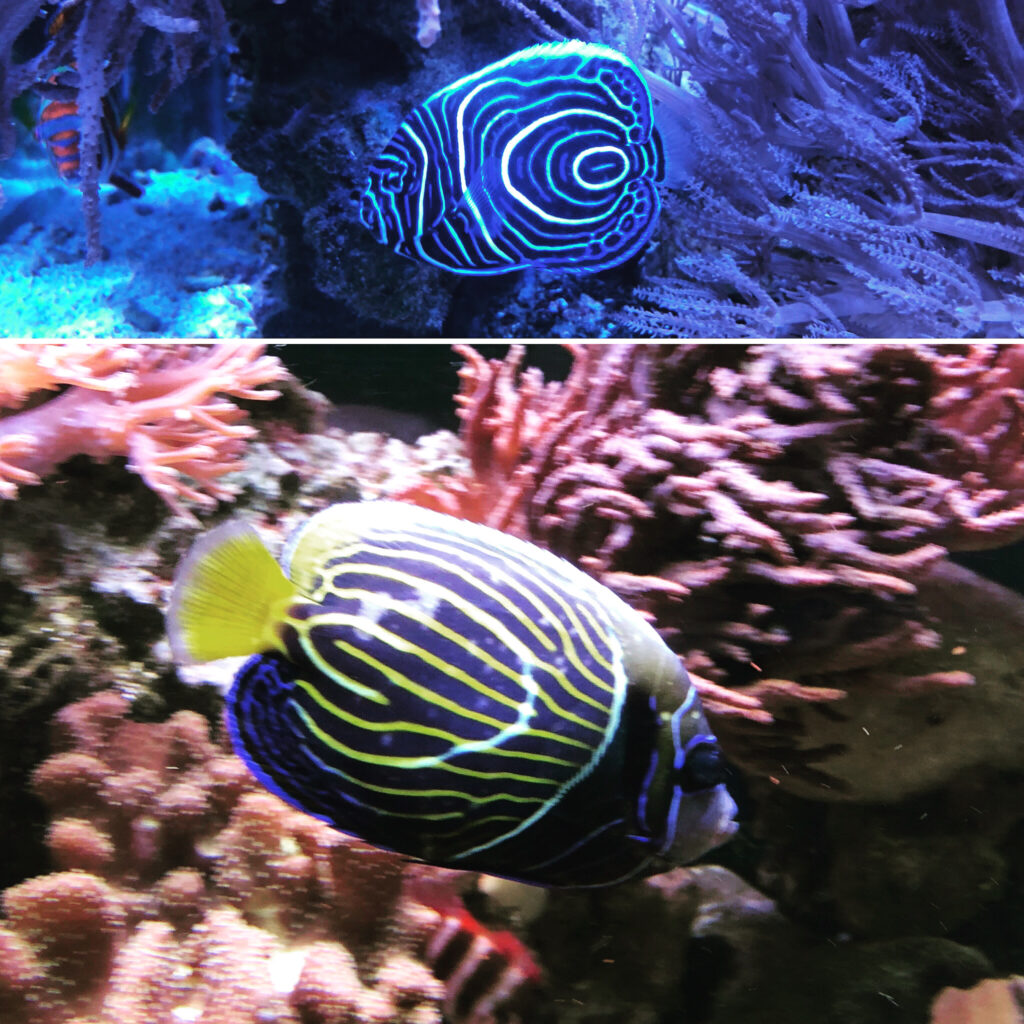
Please please before you purchase a fish from any store- ALWAYS ask the store to feed the fish in front of you. If the fish is NOT eating, it will NOT suddenly be happy and eat for you when you take it home. ONLY ever purchase fish that is eating like a pig in front of your eyes. Because by moving the already stressed out fish one more time is not going to suddenly open its appetite. Some fish may come around to begin eating in the store after a few days of acclimation. And some sadly will never come around. But please let the professionals in the fish store deal with opening their appetite as they have the knowledge and resources to help these guys. UNLESS- I know there are some marine biology wizards out there, but not most average Joe.

